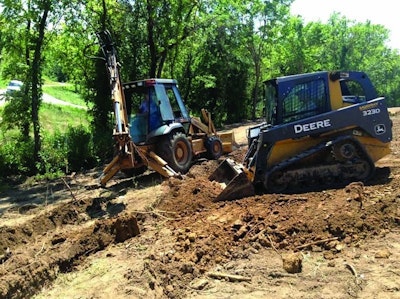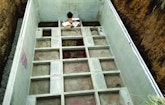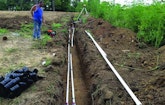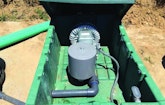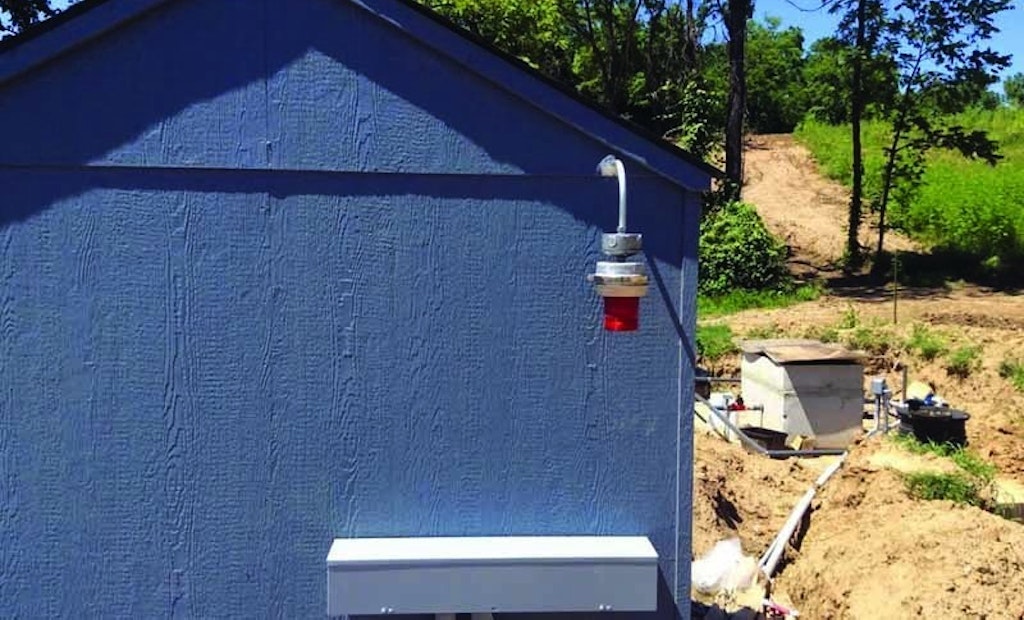
Interested in Systems/ATUs?
Get Systems/ATUs articles, news and videos right in your inbox! Sign up now.
Systems/ATUs + Get AlertsShelterwood Academy had a grease problem, and that led to a septic problem, and that led the Missouri school to seek help from Residential Sewage Treatment Company.
The school has been around since the 1980s and provides Christian-based therapy for troubled teens. Its wastewater system is more recent, although Jason Vaughn of Residential Sewage is not sure how old it is. The old system consisted of six septic tanks, a drainfield and no grease trap. (One was installed after the problem was discovered.) As grease plugged the drainfield, water began appearing on the surface of the ground, and that led the school to look at a new wastewater system. In the meantime, they used the old one and had the tanks pumped.
“As we worked on a new system, we also thought about using the existing septic tanks, but when Udell investigated their condition he discovered they were leaking, so he collapsed all six,” Vaughn says. Udell is installer Udell Dooley of Dooleys Backhoe Service in Raymore, Missouri.
Still, the old system provided one convenience: a manhole where all the pipes came together from the five buildings in the school complex. It was a simple matter to cut off the old system and splice in the new one — except it wasn’t quite that simple because Dooley had to find a quiet time early in the morning to make the switch when no one was using the wastewater system.
Components
The solution Residential Sewage came up with uses:
- Two 2,000-gallon concrete septic tanks from SI Precast in Grandview, Missouri
- A model 9.0 FAST unit from Bio-Microbics
- A 9,100-gallon concrete tank from Wieser Concrete of Roxana, Illinois
- A 7,700-gallon concrete tank from Wieser
- Two Zoeller Model 189 pumps
- Two Sim/Tech Filter pressure filters
- 3,110 feet of EZflow media from Infiltrator Water Technologies
- Polylok risers and lids on the 2,000-gallon tanks and EZset risers and lids on the 7,700- and 9,100-gallon tanks
Up the hill
From the collection point in the manhole near the school buildings, wastewater runs by gravity through 150 feet of 6-inch Schedule 40 PVC pipe to a pair of 2,000-gallon septic tanks connected in series by 6-inch pipe and spaced 10 feet apart. These provide primary treatment and settling.
From the second tank, water flows 26 feet through 4-inch Schedule 40 PVC into the Bio-Microbics unit enclosed in the 9,100-gallon concrete tank. Another 10-foot run of 4-inch pipe takes treated water to the 7,700-gallon concrete pump tank. The pair of Zoeller submersible pumps pushes water through two Sim/Tech pressure filters and then 2-inch Schedule 80 PVC pipe uphill about 18 feet to the drainfield.
Feed lines for the drainfield come from a 27- by 76- by 38-inch concrete box placed directly on top of the pump tank. The box came from Allied Concrete, a subsidiary of Residential Sewage. “We figured service would be much easier if we put all the valves in one box. The problem was we needed a really big box. No one makes a box that large, so we decided to make it ourselves,” Vaughn says.
To match the contour of the ground, the drainfield is split into seven zones, and the feed line for each zone is further divided in half so there is sufficient pressure to fill every lateral to its end. Zones varied in length from 400 feet to 520 feet. All the laterals were made of a 1-inch pipe placed inside a 4-inch perforated pipe wrapped with EZflow.
The system is controlled with an Alderon panel. It is mounted in an electrical building that also holds controls for a backup generator. That was required by the Missouri Department of Natural Resources, Vaughn says. The generator system was installed by an electrician hired by the school, but Vaughn took advantage of the building, too. Although the Alderon panel has a port for a USB drive to collect data about the system, it does not provide remote notifications of problems. So the outside of the electrical building has a flashing red light and a buzzer to attract attention if there is a problem with the system.
Installing on the slope
In between rains, the job went fairly smoothly. But first Dooley had to wait for the soil to dry out so he could get on the ground, especially to install the drainfield. “That hill is really steep. It’s not very high, not more than 18 feet, but there was about an 18 percent slope on that hillside,” he says.
He did the job with a backhoe mounted on a tractor. “We don’t have a track backhoe, so I’m very used to digging on slopes,” he says. He put in trenches with the Case 580 Super L backhoe, and one of his guys came along behind and backfilled with the John Deere 322 skid-steer.
Another worker was involved, too, and a fair amount of his time was taken up with the other challenge: tree roots. The project was delayed about six months by the Missouri Department of Natural Resources permitting process. During that time another company cut down all the trees that covered the hill where the drainfield is sited. But they didn’t clear the roots. “Every time Udell would dig a trench, he needed one guy working full time to clear the old roots out of the way,” Vaughn says.
Once the project was complete, school maintenance workers seeded the hill with grass. The only task remaining for Residential Sewage was to add some insulation to the valve box so it doesn’t freeze during winter. With 18 feet of height, any water remaining in the laterals will rapidly drain back to the pump tank.
After more than 30 years, Shelterwood Academy is now equipped with a wastewater system that will let the school staff give their full attention to their primary job: helping the children in their care.
